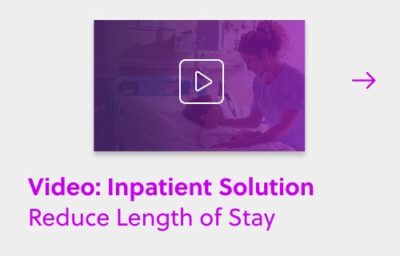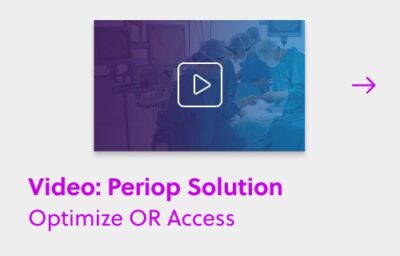For all the pessimists who believe that this is yet another highly regulated industry with no change – 2016 is poised to be another remarkably dynamic year in the healthcare / healthcare IT worlds. A powerful way to reflect on the incredible start to 2016 was to look at the now almost iconic statement made by CMS administrator, Andy Slavitt, earlier this year who in a matter of a few tweets brought the end to the meaningful use program.
So as we head into the greatest show in the Healthcare IT world (the annual HIMSS conference), we wanted to look forward to 2016 and make some predictions on the trends that we think will be most meaningful this year:
1. There will be an urgency in translating data (input) beyond insight to action (outcome, efficiency and experience enhancement).
The modern health system has hundreds of devices, thousands of employees, and millions of data points in various software systems ranging from EMRs to scheduling to call light systems. The sad reality is that current analytics only aggregate data in dashboards and graphs without clear insights, let alone recommendation on optimal actions. The future will belong to those who can actively translate data to insights and recommend actions in real time to enhance outcomes, experience, and efficiency.
2. There will be a mandate from leadership teams to simplify the lives of frontline staff and clinicians.
From physicians to nurses, in the era of rapid change in our industry, it is remarkably difficult to be an effective and satisfied frontline provider given the constant alarm fatigue, hundreds of metrics being measured by tens of dashboards by different teams and executives, all compounded by terrible software that act like walls between the patient and their providers. A key ask for any healthcare technology company in 2016 will be to simplify the frontline’s cognitive workload.
3. There will be urgency in moving from reactive care to proactive care, giving rise to predictive/prescriptive analytics and machine learning.
It is no secret that at the core of hospital and healthcare operations is a very reactive environment, designed perfectly for fire-fighting on a daily basis. Given the burnout crisis, the resource constraints, the desire to elevate the patient experience, 2016 will continue to have a big push for using tools that help providers move from a reactive to more proactive world in healthcare delivery. As a result, we believe the class of artificial intelligence/machine learning tools along with next generation predictive/prescriptive analytics will be in demand.
4. Patients will continue to demand a better user experience by voting with their feet & $.
The retail revolution is well underway in American healthcare. In an age of growing consumerism, factors like a strong brand and customer service are not optional to participate in the healthcare services arena. Companies like Walgreens are reminding large healthcare providers across the country that they have been selling to customers in healthcare at scale for a long time. For example, The Advocate-Walgreens partnership in Chicago, signals the seriousness of these retail players to participate in more than providing your flu shots for the year.
5. Providers and payors will demand accelerated alignment in incentives from technology companies, giving the rise of healthcare SaaS models.
It is quite safe to say that healthcare lags other industries in its adoption of latest software practices. In an age when most other industries are using cloud based services like Salesforce or Workday, almost any CFO at a health system today is still struggling to optimize their $100M+ investments in legacy EMRs. As the scrutiny towards outcomes rises and the appetite for new software investments decreases over time, the ability to hire/fire new software solutions will increasingly be only possible through pay-as-you-go software as a service models (SaaS).
6. Providers will continue “dual system” fee for service & value based care approach, but the bundle will accelerate journey to the value based care world away from fee for service.
In a largely fee-for-service world, buzzwords like “population health” continue to take on different definitions from provider to provider, but the pathway by CMS to alternative payments solidifies the journey away from traditional fee-for-service economics. The orthopedic bundle for example known as the “Comprehensive Care for Joint Replacement Model” has a profound impact in the short term capabilities of health systems in more 75 markets around the country.
7. Providers, now in the customer renewal business, will be forced to learn how to better execute on “product management” due to narrow networks and retail competition.
As one healthcare CEO outlined earlier this year at JP Morgan, health systems are now in the “renewals business” and actually need to earn their business every year. As providers like the Cleveland Clinic or Mayo actively market their specialized care to employers like Lowe’s and as providers like Iora/Paladina/One Medical market their primary care or Zoom+ for emergency care, health systems are actively trying to compete and understand how to build effective products that have a seamless experience for the customer.
8. Management teams at providers will continue to stress about revenue diversification and long term business models.
At Becker’s CEO Roundtable last year, the CEO of Woman’s Hospital in Louisiana discussed the provider’s strategy for developing their real estate to attract additional revenue from new restaurants and other attractions. As the baby boomer generation accelerates its journey towards retirement and the payor mix continues to deteriorate, there will continue to be an incredible stress on many providers to build a revenue diversification strategy.
9. Accelerated partnerships between digital health and traditional providers will bridge the “analog” and “digital” divide.
Ford and Tesla serve as great examples for future potential pathways in healthcare’s use of software/technology. Ford is an auto maker that has actively retrofitted their traditional architecture by adding software on top of their previous generation hardware. Tesla on the other hand has broken apart the modern car and reassembled it with intelligent software at the center. Apart from providers like Clover and perhaps even Providence, most providers have taken the Ford route and since software has not been a core competency of healthcare providers, they will be forced to accelerate their partnership with leading digital health companies to bridge the gap between current capabilities and the growing expectations of the consumer.
10. Interoperability will be the price of entry for new projects, as patients and government will demand all players to be able to talk to each other.
Growing expectations from payers and patients will force health systems and technology companies to ensure data is open for patients to easily access and is transferable between different providers to ensure optimal care throughout the continuum. Growing pressures from factors like bundle payments will accelerate new data bridges to plug the crucial gaps in the continuum such as between acute and post-acute care providers.


